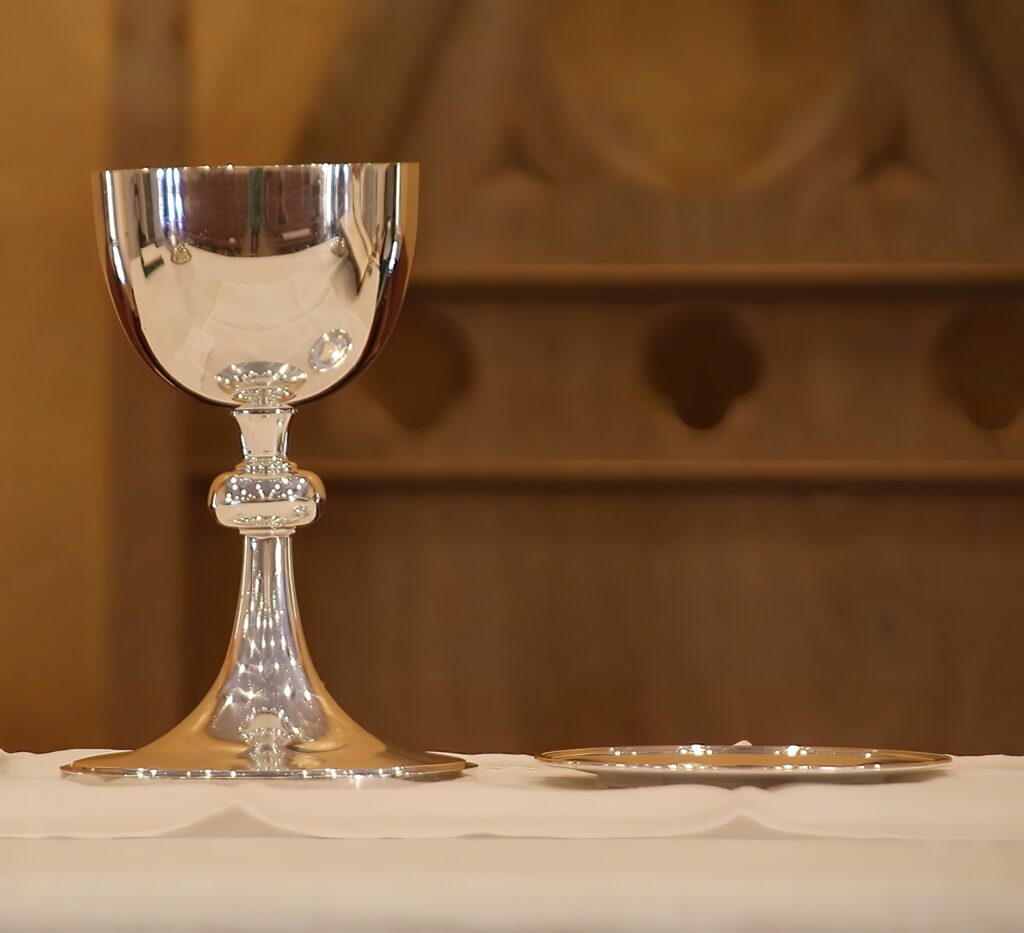- Feb 5, 2002
- 166,616
- 56,251
- Country
- United States
- Faith
- Catholic
- Marital Status
- Married
- Politics
- US-Others
What follows is a homily delivered during Mass on August 3, 2021, at Our Lady of Peace Retreat House, an apostolate of the Franciscan Missionary Sisters of Our Lady of Sorrows in Beaverton, OR.
The story of the silver chalice in my possession, which is a Pattee Family Heirloom, began in 1925 when my grandfather, Larry Pattee, arranged with his family to give their son and brother a chalice after his ordination to the Catholic priesthood. My great uncle, Fr. Frank Pattee (1893-1935), was ordained for the Diocese of Sioux City, IA on Saturday, June 6, 1925. In 1930, however, Fr. Frank contracted tuberculosis which became so serious that he had to resign his parish and move to St. Francis Hospital and Sanitarium in Colorado Springs, CO. About the same time Fr. Frank’s sister, my great aunt Sr. Mary Agatha Pattee, responded to a call from her superiors in the Franciscan Sisters of Dubuque to go on mission to China. During her preparations, she visited Fr. Frank who, knowing his time on earth was short, wished to donate his chalice to the China mission. Sr. Mary Agatha received the silver chalice from him, packed it among her things, and brought it with her to China. She traveled by boat, arriving at the missionary compound in Chowtsun, China in late summer of 1934 where she joined four other Dubuque Franciscans who had been there since the fall of 1931.
For several years, the silver chalice served the mission convent. Things began to destabilize, however, when the Japanese invaded China in July of 1937. When the Japanese finally arrived at Chowtsun, Sr. Mary Agatha received permission amid the fighting to consume the Eucharist and gather the precious items of the altar, including Fr. Frank’s chalice, placing them in a trunk which she buried in the back of the compound. The Japanese prevailed and soon after arrested all the sisters, leading them away to internment camps in March of 1943. The conditions in these camps were not as hellish as the death camps of Nazi Germany, but their life was hard, including daily labors with meager food rations. This went on until Imperial Japan was defeated in August 1945, formally surrendering on September 2.
Continued below.

 catholicexchange.com
catholicexchange.com
The story of the silver chalice in my possession, which is a Pattee Family Heirloom, began in 1925 when my grandfather, Larry Pattee, arranged with his family to give their son and brother a chalice after his ordination to the Catholic priesthood. My great uncle, Fr. Frank Pattee (1893-1935), was ordained for the Diocese of Sioux City, IA on Saturday, June 6, 1925. In 1930, however, Fr. Frank contracted tuberculosis which became so serious that he had to resign his parish and move to St. Francis Hospital and Sanitarium in Colorado Springs, CO. About the same time Fr. Frank’s sister, my great aunt Sr. Mary Agatha Pattee, responded to a call from her superiors in the Franciscan Sisters of Dubuque to go on mission to China. During her preparations, she visited Fr. Frank who, knowing his time on earth was short, wished to donate his chalice to the China mission. Sr. Mary Agatha received the silver chalice from him, packed it among her things, and brought it with her to China. She traveled by boat, arriving at the missionary compound in Chowtsun, China in late summer of 1934 where she joined four other Dubuque Franciscans who had been there since the fall of 1931.
For several years, the silver chalice served the mission convent. Things began to destabilize, however, when the Japanese invaded China in July of 1937. When the Japanese finally arrived at Chowtsun, Sr. Mary Agatha received permission amid the fighting to consume the Eucharist and gather the precious items of the altar, including Fr. Frank’s chalice, placing them in a trunk which she buried in the back of the compound. The Japanese prevailed and soon after arrested all the sisters, leading them away to internment camps in March of 1943. The conditions in these camps were not as hellish as the death camps of Nazi Germany, but their life was hard, including daily labors with meager food rations. This went on until Imperial Japan was defeated in August 1945, formally surrendering on September 2.
Continued below.

The Silver Chalice: A Story of Faith
What follows is a homily delivered during Mass on August 3, 2021, at Our Lady of Peace Retreat House, an apostolate of the Franciscan Missionary Sisters of Our Lady of Sorrows in Beaverton, OR. The story of the silver chalice in my possession, which is a Pattee Family Heirloom, began in 1925...
